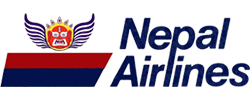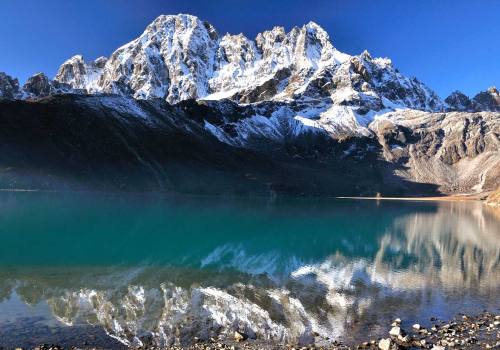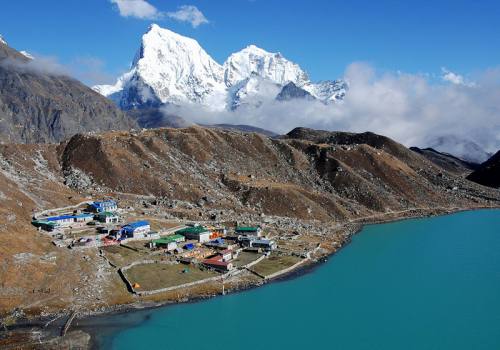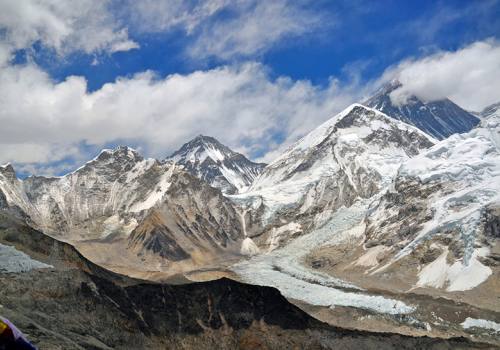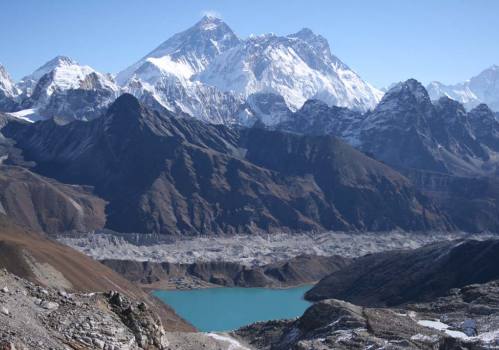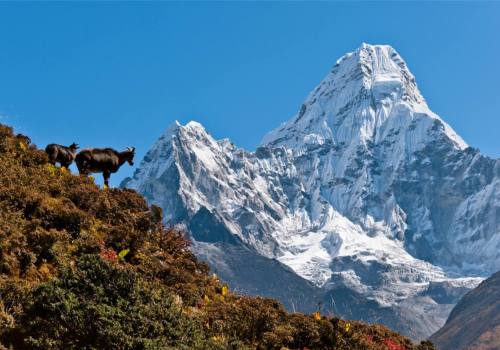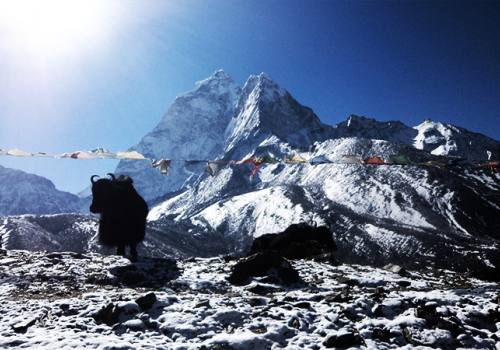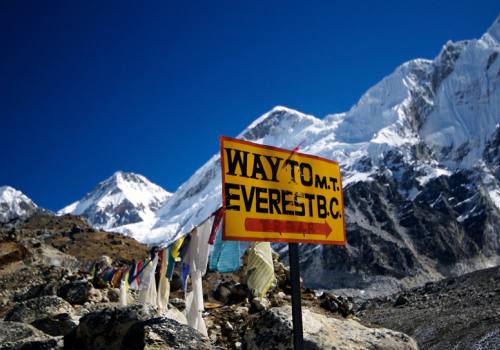Everest Region
The Everest region has gained its popularity for trekking, mountaineering, peak climbing and expedition. Among the major destinations of trekking in Nepal, Everest region stood second despite poor accessibility. It is more expensive and difficult to get Solu Khumbu than to the Annapurna region. One must either walk for a week or fly to Lukla to get near Everest. The number of trekkers to Everest has increased dramatically because of the publicity the mountain has received from several sources. Solu Khumbu is famous not only for its proximity to the world's highest mountain, Mt.Everest (8848m.), but also for its Sherpa villages and age-old monasteries. The primary goal of trekking in Everest region is stepping at least the Everest Base Camp (5340m.).
It is the matter of fact that Mt.Everest can not be observed from the base camp. So, most of the trekkers climb Kala Pattar (5545m.) which is situated on the southern flank of Pumori (7145m.). Not only Everest but also other mountain peaks such as Mt. Lhotse , Mt. Nuptse , Mt. Amadablam , Mt. Pumori , Mt. Thamserku , Mt.Kantega, Kwangde and others can be seen from Kala Pattar.
Everest region offers varieties of trekking trails like- Everest Base Camp Trek, Kala Pattar Trek, Gokyo-Ri Trek,, Gokyo Cho- La Pass Trek, Renjo La Pass Trek, Everest High Pass Trek, Everest View Trek, Everest Panorama Trek, Everest Comfort Trek, etc. Along the trail, the travelers would experience the typical Sherpa culture in the alpine settlements such as Lukla, Phakding, Monjo, Namche Bazaar, Khumjung, Thame, Tyangboche, etc. Being situated at higher altitude, the region has high risk of Acute Mountain Sickness (AMS) if due emphasis is not given for acclimatization. If symptoms like headache, loss appetite and vomiting are seen, one has to immediately inform to the guide so that he would facilitate to take first aid treatment or take you to the near by health post or he will take you down to the lower altitude.
Package (s)
Dudhkunda Lake
Trek off the beaten track to the Holy Lake…
Everest Base Camp & Gokyo Lake
Spectacular traverse from Gokyo Lakes to…
Everest High Passes
Three high passes and five superb viewpoints…
Gokyo Lake
A magnificent trek to the Gokyo Lakes and…
Instant Everest
The finest short trek in the Everest region
…Classic Everest
Follow in the footsteps of the legends…
Everest Base Camp Trek
Everest Base Camp Trekking has been a famous challenging…
Company Profile
Related Activities



